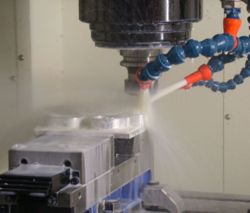Virtual designs into physical objects/Intro
At the time of writing, humanity is at the peak of a revolution in storing, reproducing and manipulating information. We have technologies that give us an almost godlike command of information, allowing us to bend it according to every whim. Our command of information is decentralized, in the hands of anyone with access to increasingly cheap technology — and this has created a culture of true abundance in which information (including things like books and music) is given away freely. What if we could achieve the same mastery over physical objects? What if anyone with some inexpensive kit could conjure up a laptop computer, farm machinery or advanced robots? That is the direction that technology is now evolving in. We discuss here some of the currently-existing technologies for turning virtual designs into physical objects, but it is worth bearing in mind that now - in 2010 - the manufacturing revolution is at the same stage that the computer revolution was at in the 1960s; the technology does exist, but it is bulky, expensive, of limited functionality, and requires a certain amount of expertise to operate. However, trends of miniturization, open-sourcing and accessibility are proceeding rapidly.
The ultimate pinnacle of this trend will be productive nanotechnology: when millions of tiny robots can be programmed to build any conceivable object with molecular precision. It is difficult to imagine scarcity existing at all in a civilization with such technology.
Ways of physically forging collaborative designs created on a computer range from getting your hands dirty and crafting it yourself to sending the design (or parts of it) as an electronic file to an increasing number of computer-controlled manufacturing systems such as rapid prototyping or advanced multi-axis CNC machines  that can accurately create parts in 3D in a variety of materials.
that can accurately create parts in 3D in a variety of materials.
What is illustrated in this section is that the world of atoms is starting to catch up with the world of bits in terms of ease of control and duplication. We are entering the age of digital manufacturing. Objects and machines are boiled down to pure information which can be instantly transmitted around the world and recreated physically wherever these 'fabbers' exist.
This wiki is full of technological solutions to the problems that face humanity. But to implement these solutions, we need a way of manufacturing these technologies. The old economic model of producing technologies in large-scale factories and selling them at a profit is fine in some cases, but it has failed the world's poor, and it does not provide tailor-made products. But if fabrication technologies are spread around the world, anyone with a computer and raw materials can manufacture any electromechanical device they need or want.
A corporate rollout of a new technology takes years: marketing campaigns must be designed, market research done, contracts signed, distributors arranged etc. With open-source hardware and distributed manufacturing you can have the latest technology the day it is invented. This is important in an era of rapid technological change.
Here are some of the increasing number of methods available to bring virtual designs to life...
